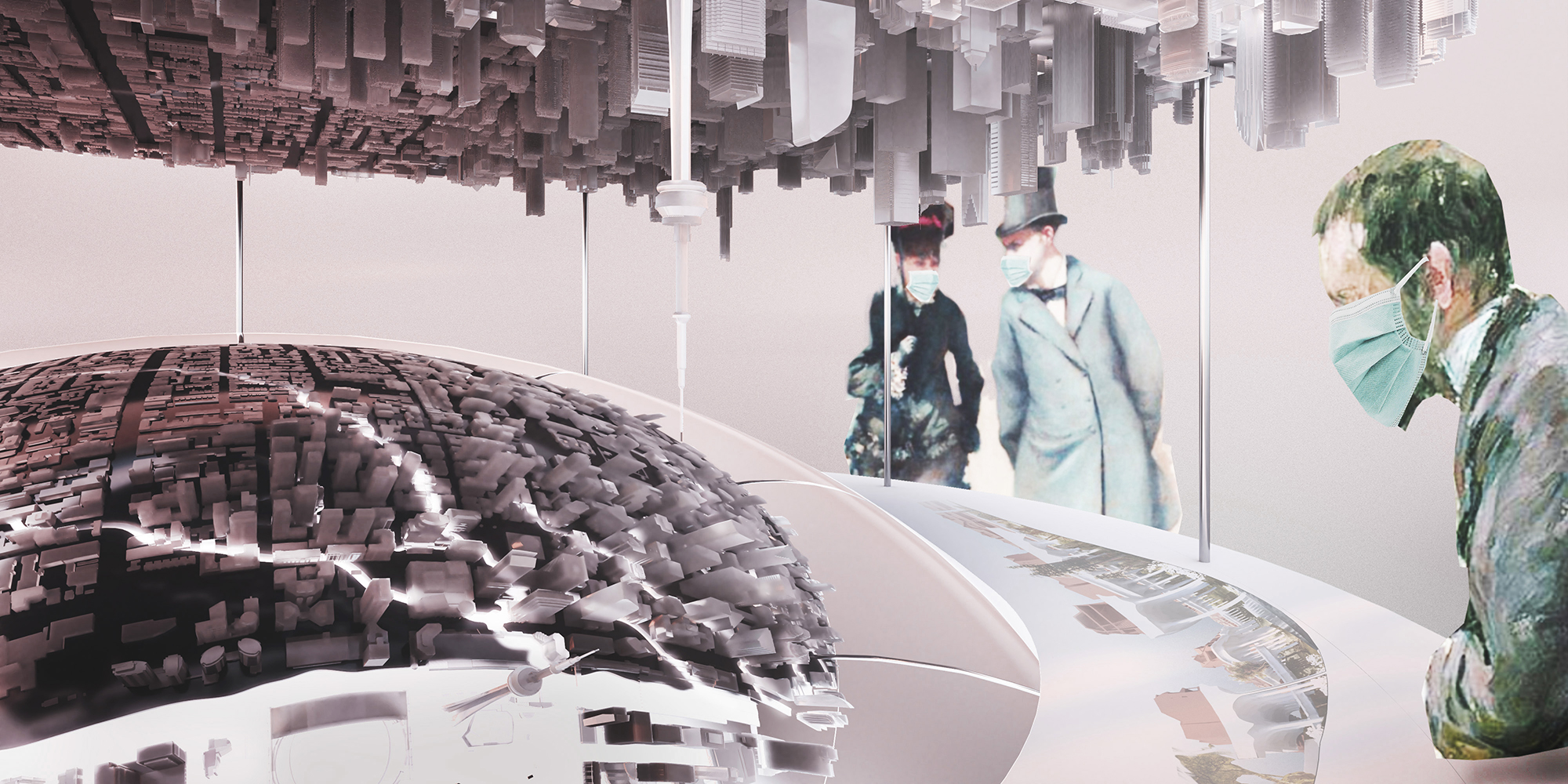
26.04.21 - More Daniels alumni and faculty are headed to the Seoul Biennale
The Daniels Faculty delegation to the 2021 Seoul Biennale of Architecture and Urbanism keeps growing.
GAMBJTS, an interdisciplinary collaboration between Daniels alumni and lecturers, will be exhibiting a joint project, titled "Beneath the City: Rivers," at the biennale.
This will make them one of at least two groups with Daniels connections at the event. Another project group, made up of Master of Architecture graduates from 2020, announced that its installation had been selected for the biennale in January.
GAMBJTS consists of Pooya Aledavood (MArch 2019), Nicolas Mayaux (MArch 2019), Brandon Bergem (MArch 2019), Vincent Javet (MLA 2018), Robbie Tarakji (MArch 2019), and Elly Selby (MArch 2019), who are all recent graduates of the Faculty, and Jeffrey Garcia, who isn't a Daniels alumnus. Javet and Garcia teach at Daniels as sessional lecturers.
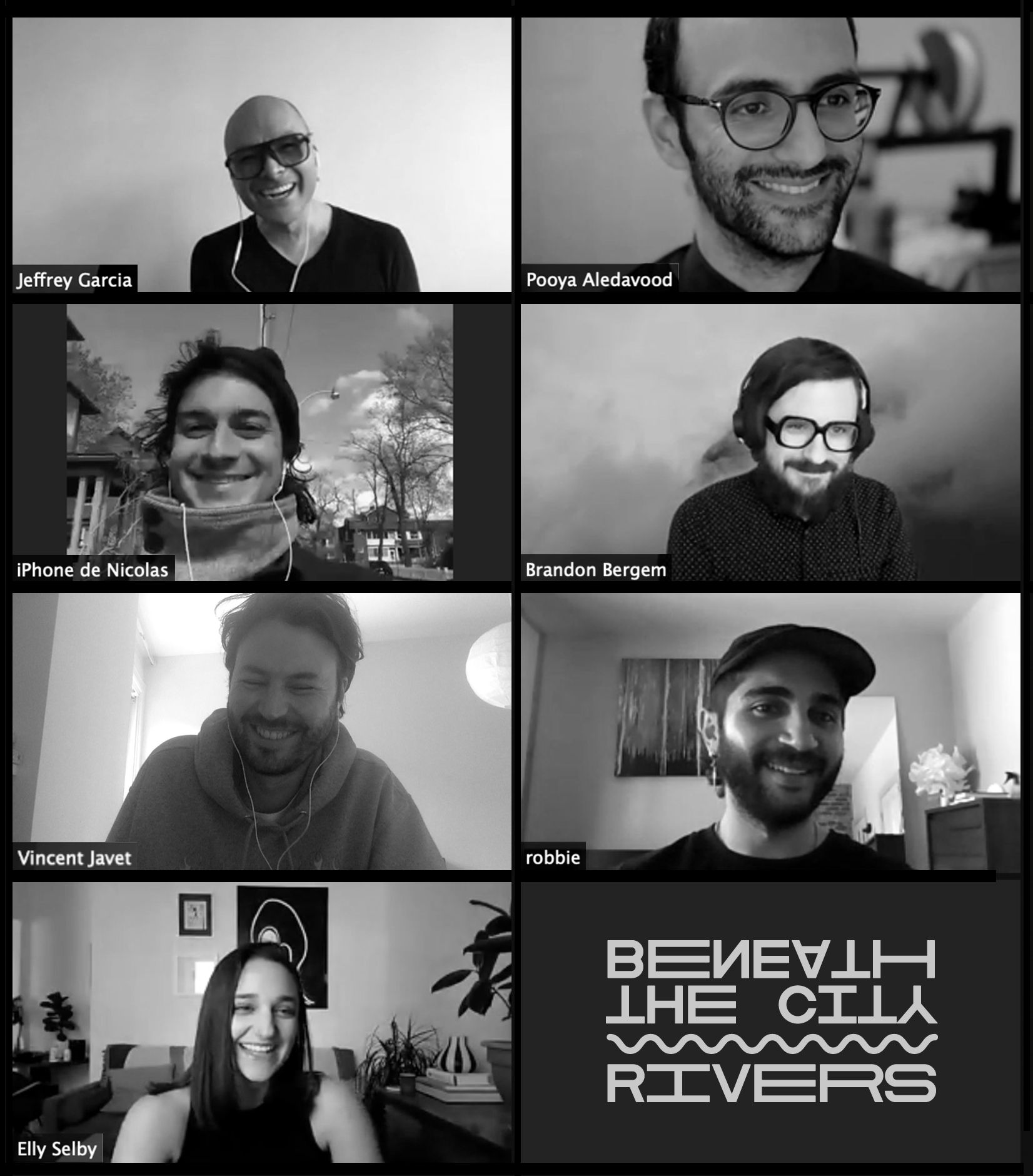
A GAMBJTS group photo.
The Seoul Biennale, which takes place in the South Korean capital, is a major international showcase for architecture and design, with a competitive entry process. Teams submit proposals and are invited — or rejected — based on the merits of their designs and the applicability of them to the biennale's chosen areas of focus. The theme of this year's event is "building the resilient city."
Beneath the City: Rivers addresses resiliency in a unique way. Rather than propose definite solutions to environmental ills, the project engages in speculation: What if, it asks, Toronto "daylighted" some of its hidden water infrastructure, including the long-buried creeks that channel the city's stormwater? Could these hidden waterways be remade into sustainable leisure landscapes?
“Toronto’s seen and unseen natural systems can provide a framework for how we might think about resilient urbanism.” Javet says. "The idea is to expose these buried hydrological systems to promote resiliency through landscape as a means of infrastructure."
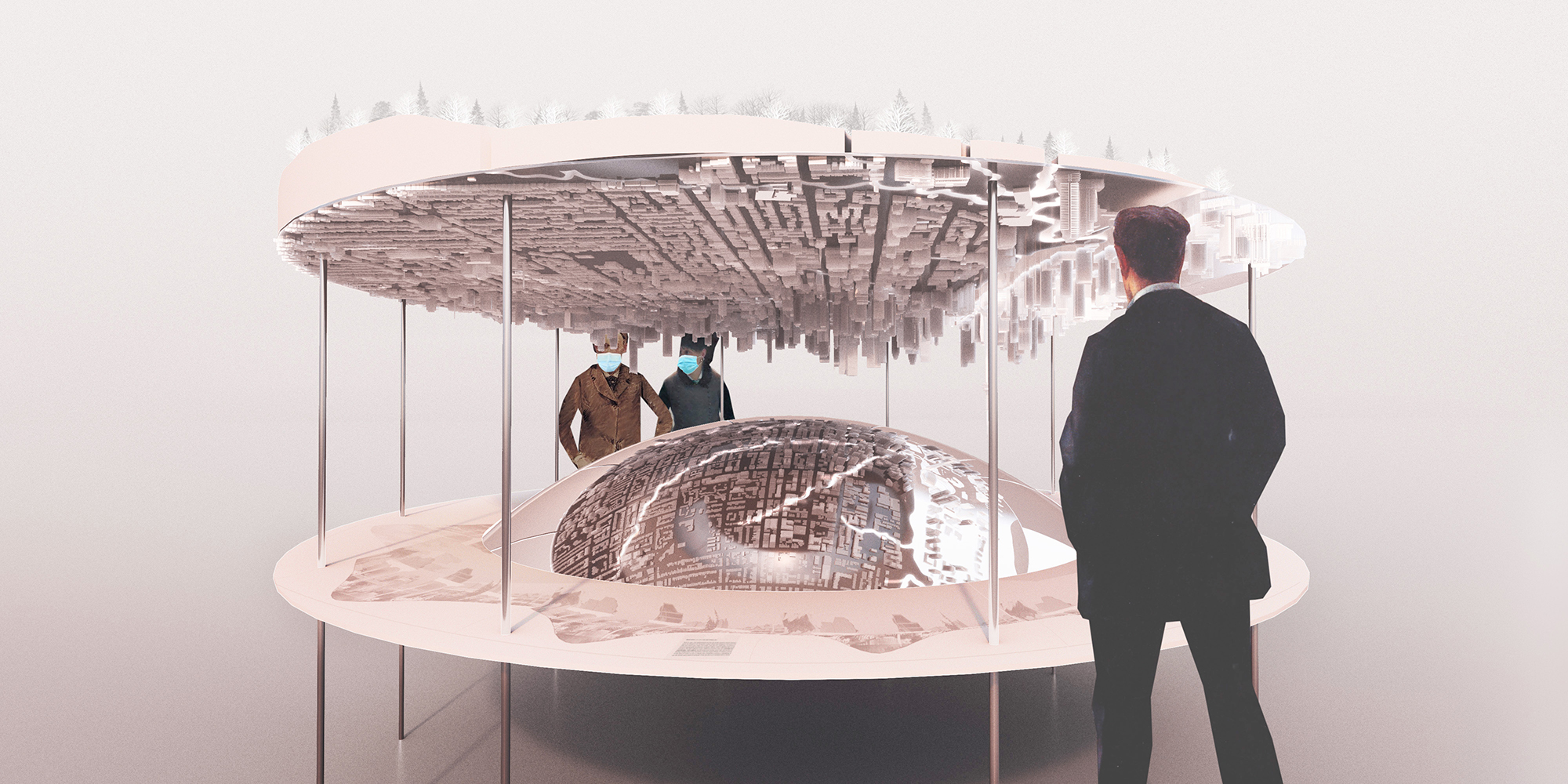
The group's installation at the biennale will consist of a large, 3D-printed model of downtown Toronto, suspended upside-down over a convex mirrored surface, with the buried creeks represented as translucent slashes across the city grid. The topsy-turvy presentation will encourage viewers to think about what lies beneath the city's streets.
Around the perimeter of the circular model will be renderings of a series of design exercises intended to show what the city might look like after its water infrastructure was thoroughly daylighted.
Each rendering shows a speculative city scene. In one, the familiar parkland in front of the Ontario Legislative Building is flooded with water. The legislature's statue of John A. Macdonald, Canada's first prime minister, is shown immersed in the flood, with only its head poking above the waterline. In this instance, water infrastructure isn't the only thing being revealed.
"This is an acknowledgement that the land does not belong to us," Garcia says. "It is a depiction of colonization, because the statue sits on territory taken from many nations, including First Nations and Indigenous peoples.”
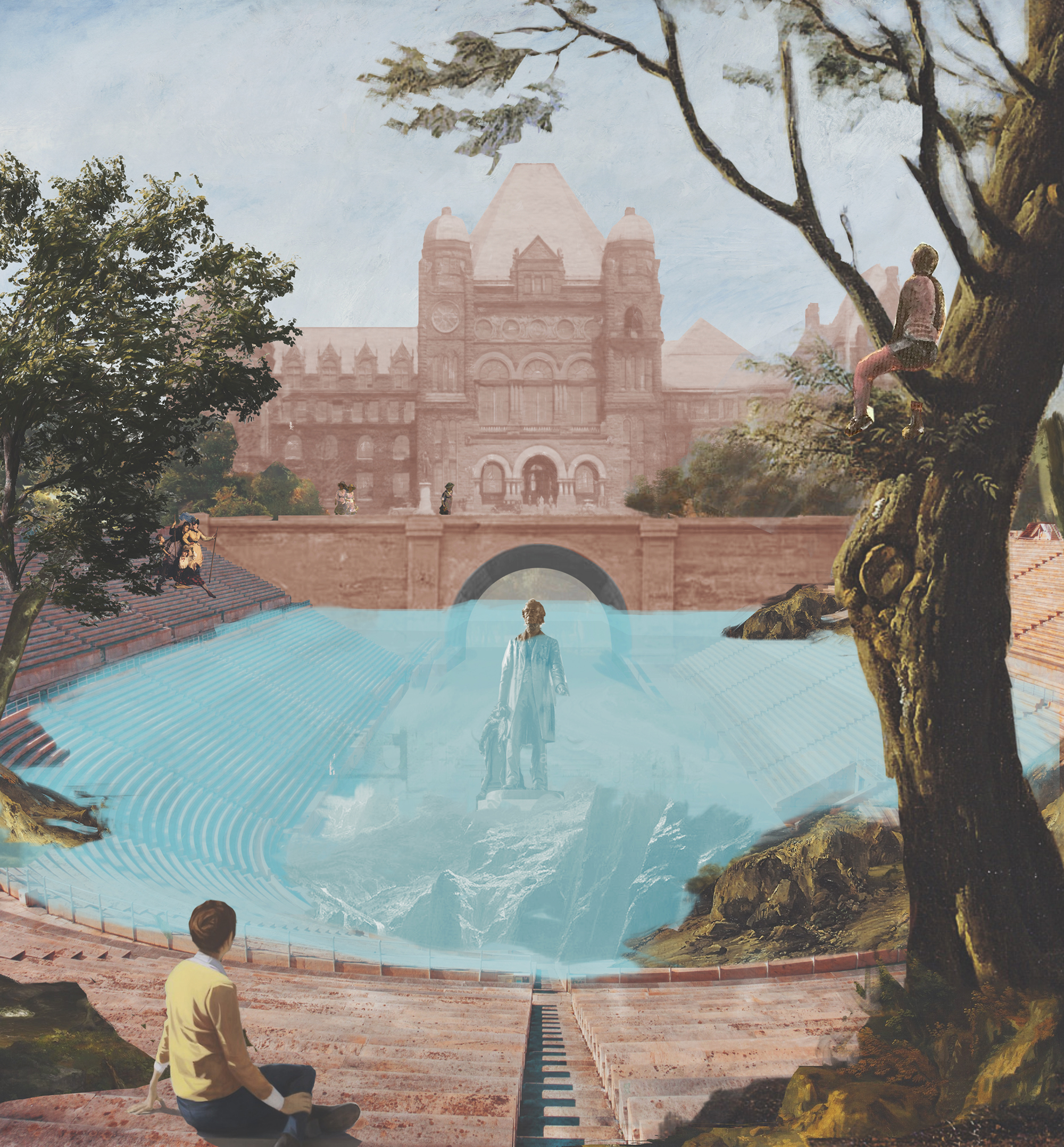
Another rendering shows one of Toronto's Victorian neighbourhoods, its streets excavated to expose the ancient creeks that, in reality, flow through subterranean culverts. The area around the creeks is transformed into a public park.
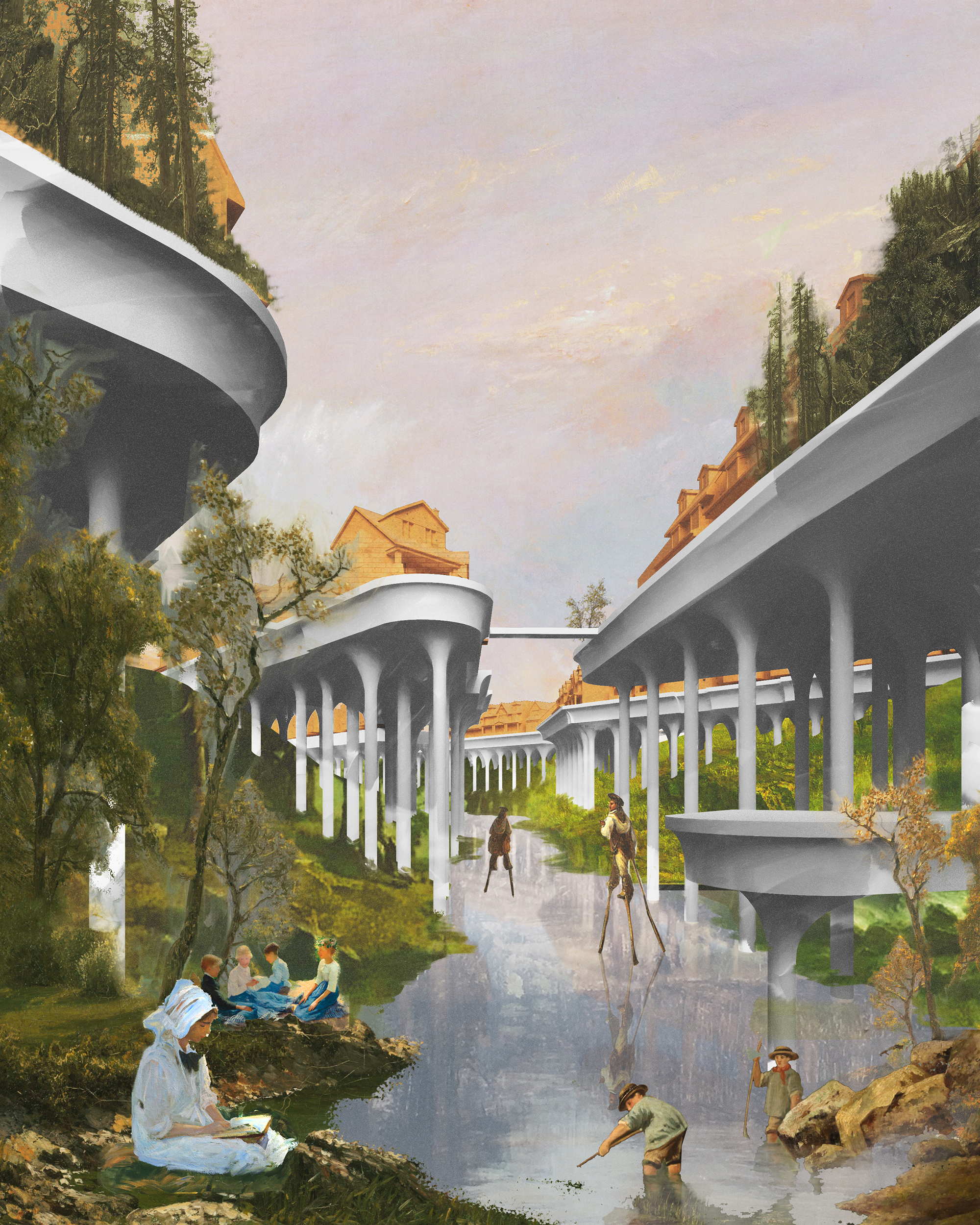
The group took the opportunity to reinterpret one of the most sacred sites in Toronto architecture, Mies van der Rohe's modernist TD Centre Plaza. A rendering shows the plaza's sleek grey pavers replaced by a pool of water, with a tree growing proudly amid the monumental cluster of dark towers. The group was aware that this might create controversy. "It's quite telling that people have a visceral response to the excavation of this relatively recent cultural landscape," Javet says. "The plaza has occupied the land for a little over 50 years, where many of Toronto’s waterways were of ecological and cultural importance for thousands of years. It’s the same reaction.”
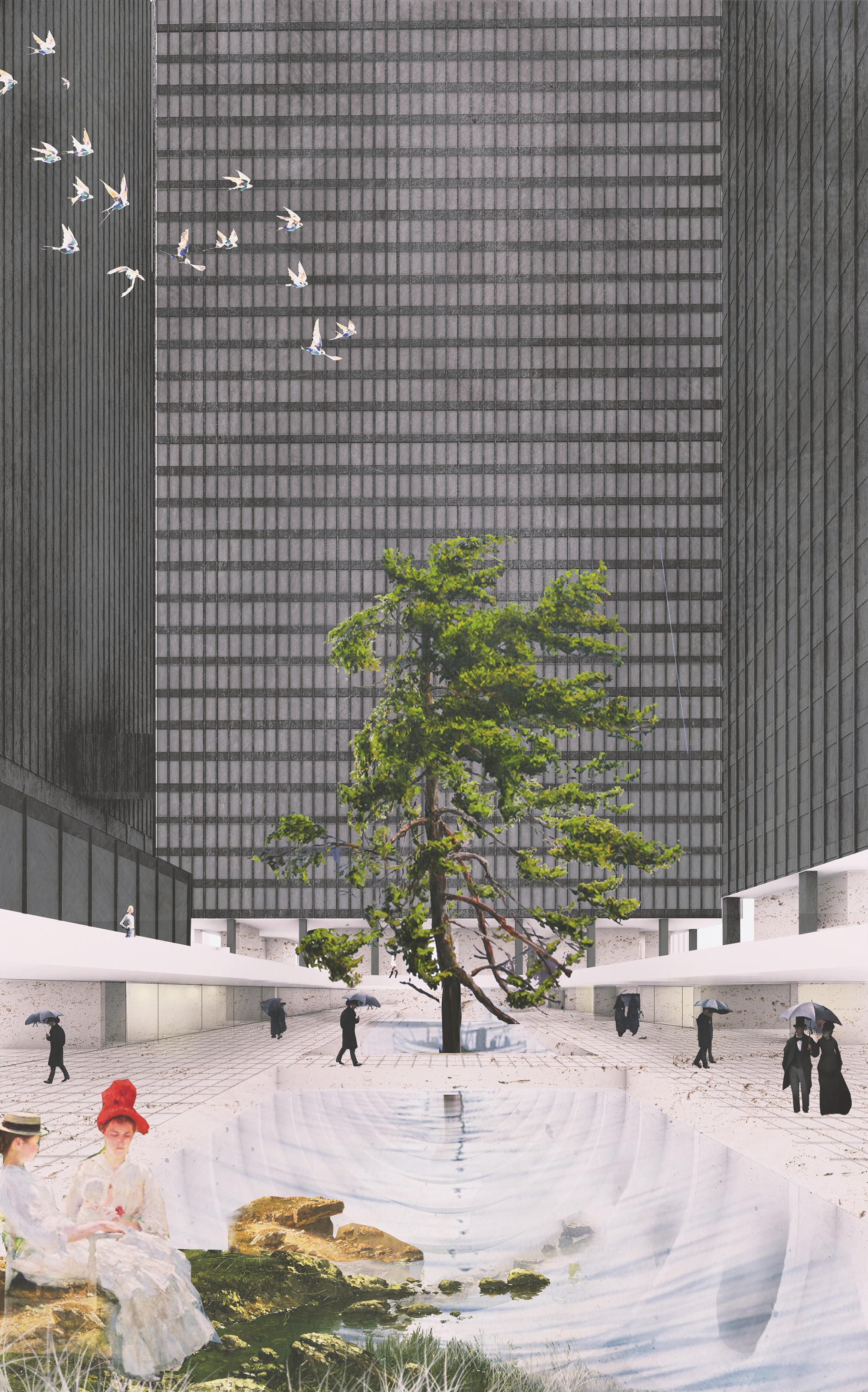
The group also gave its speculative treatment to one of the city's most laid-back leisure landscapes: the nude beach at Hanlan's Point, on the Toronto Islands. A rendering shows the beach transformed into a hybrid landscape, where leisure and infrastructure are practically indistinguishable. Nude bathers lounge in the mouths of large concrete drainage pipes.

The Seoul Biennale begins on September 16 and runs through the end of October. Its organizers are currently planning to hold the event in person, pandemic permitting. For more information, visit the biennale's website.

